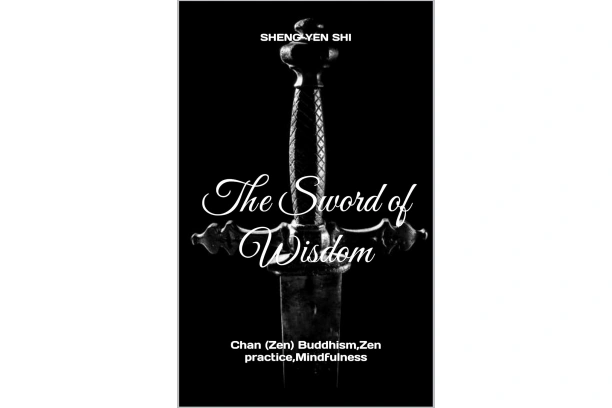How to Use Mindfulness and Meditation to Enhance Nonviolent Communication Skills
Nonviolent communication (NVC) offers a way to stay connected to our best intentions and to express these intentions in dialogue. It goes beyond being a communication technique; it invites us to deeply reflect on how, as human beings, we choose to live, coexist, and share resources with other species. Are we returning to ancient methods of warfare and dominance, or can we recognize the potential for cooperation, empathy, and creativity? If you want to cultivate inner peace through meditation, we sincerely recommend you to check our ebook The Sword of Wisdom: Chan (Zen) Buddhism,Zen practice,Mindfulness. In this book, you may can look for the right answer.
Psychological Perspective on Nonviolent Communication
The essence of nonviolent communication is to help us accept reality and communicate in a way that takes into account the needs of others. It’s about meeting our needs without sacrificing others’. When people sense that we are genuinely interested in finding a mutually beneficial solution—not just aiming to get our way—they are often more open to listening and cooperation.
I have been studying how mindfulness helps us maintain awareness with balance, openness, and curiosity—a mode that gives us more control. Without it, our minds and emotions often go on “autopilot.”
When facing inevitable conflicts, such as confrontation, fear, or anger, mindfulness can serve as our guide, helping us identify the needs behind emotions and manage impulses.
The goals of mindfulness and nonviolent communication are to foster a deeper understanding of human nature and awareness of our needs and the needs of others. Our upbringing and environment shape who we become, influencing how we see ourselves and others.
Humans have an inherent desire to be recognized by their “tribe.” However, rigid adherence to a particular viewpoint or belief can restrict our emotions and minds, limiting our capacity to learn, communicate, and fully experience life. By building authentic emotional connections and sharing personal stories, we can open our hearts, as beliefs are rooted in emotions rather than logic.
For those looking to practice nonviolent communication, I suggest starting with an understanding of both your own needs and the needs of others. Through continually asking questions like “What is most important to me?” and “What is most important to you?” we can uncover shared values and goals and find more common ground.

Meditation, Mindfulness, and Nonviolent Communication
We are constantly seeking ways to improve self-awareness, mental clarity, and our relationships. Meditation, mindfulness, and nonviolent communication offer us such paths, representing ancient wisdom while aligning with modern psychological research.
- Meditation: Through practices like sitting, breath control, and focused thought, meditation fosters inner peace and heightened awareness. This practice not only helps us gain insight into our thoughts, emotions, and behavior patterns but also enables us to respond more calmly and intentionally during conflicts and stress.
- Mindfulness: As a crucial aspect of meditation, mindfulness cultivates complete awareness of the present moment through observation, sensation, and mindset practices. This non-judgmental, non-attached awareness allows us to experience each moment with openness and acceptance.
- Nonviolent Communication: NVC offers an empathy-based model of communication, guiding us through four steps: observation, feeling, need, and request. It teaches us how to express ourselves and listen to others, providing a strategy to resolve conflicts and deepen understanding and connection in our fast-paced, high-stress modern world.
Practicing breath awareness in meditation and mindfulness reveals a bridge connecting consciousness and subconsciousness. Recognizing shifts in breathing patterns during emotional upheaval is a critical first step in slowing down reactions and becoming aware of our own emotions and needs. Combined with NVC’s self-empathy techniques, we can better understand our underlying motivations and reshape our judgmental thinking.

Guided Meditation Practice for Nonviolent Communication
- Begin Meditation
Find a quiet place to sit, close your eyes, take a deep breath, and slowly exhale. Allow your body to gradually relax, noticing any areas of tension or discomfort and releasing them with each breath. - Observe Feelings
Now, turn your attention inward and observe your current feelings. There’s no need to judge them; simply notice what they are—joy, sadness, anger, or something else. - Explore Needs
Next, try to explore the needs behind these feelings. What are these feelings telling you? Are there unmet needs they reflect, such as a desire for connection, understanding, or respect? - Express Needs
As you gain a clearer understanding of your feelings and needs, imagine a scenario where you express these needs with empathy. Is it through a conversation with someone or perhaps by altering a certain behavior? - Imagine Receiving
Finally, envision receiving someone’s needs expressed with the same empathy. What needs might they share? How would you respond to promote understanding and connection? - End Meditation
When ready, take a deep breath, exhale slowly, and carry this awareness and peace back into your daily life.







